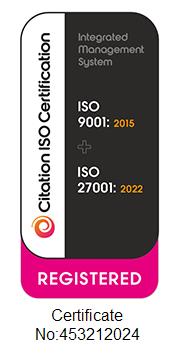Why Thriving Communities Are the Secret to Business Growth
04 Apr 2025, posted in Blogs
In a digital-first world, customers expect more than just a product or service. They want connection. Belonging. Purpose. That’s where community comes in — not as a “nice to have,” but as a core growth engine for modern businesses.
What Is a Thriving Community?
A thriving community is more than a mailing list or a LinkedIn group. It’s an interactive, engaged ecosystem of people who share a connection to your brand — whether they’re employees,
customers, partners, or prospects.
In thriving communities:
• People interact with each other, not just the brand
• Value is exchanged both ways: education, support, inspiration
• The brand becomes a facilitator of connection, not just a seller of solutions

Why It Matters: The Business Case for Community
Let’s cut to the chase: community drives revenue. Here’s how:
- Increased Customer Lifetime Value (CLV)
According to Harvard Business Review, increasing customer retention by just 5% can boost profits by 25% to 95%. Communities increase retention because they build emotional loyalty and reduce churn. People stay longer when they feel seen, heard, and connected. - More Opportunities to Cross-Sell and Upsell
Community creates more touchpoints with your audience — not just transactional, but relational. You’re not constantly trying to “sell” — you’re sharing, educating, solving problems, and then naturally offering solutions (i.e., your services) at the right time.
A report by CMX Hub showed that 86% of companies with branded communities said it improved customer journeys and increased cross-sell/upsell effectiveness.
- Lower Cost of Acquisition
A vibrant community becomes a referral engine. People invite others in. Trust spreads. According to Nielsen, 92% of people trust recommendations from people they know over any other form of advertising.
When your customers are talking to each other and sharing their experiences, you reduce your dependency on paid acquisition. - Faster Feedback & Innovation Loops
Your community becomes your real-time focus group. You can validate ideas, test new features, and co-create offerings with your most engaged audience. This shortens your development cycle and ensures what you create is wanted. - Content & Advocacy at Scale
Your most active community members become content creators and advocates. They tell your story for you. You move from brand-led messaging to community-led growth.
Real-World Examples
- Peloton didn’t just sell bikes — it built a community of users encouraging each other, sharing milestones, and subscribing to more classes and gear as a result.
- Salesforce’s “Trailblazer” community is central to its growth — offering support, training, and networking that deepens product use and increases upsell across its ecosystem.
- Glossier built a billion-dollar brand by nurturing a highly engaged customer base on Instagram and in forums, turning fans into evangelists.
The Strategic Advantage: Community as a Moat
A product can be copied. A price can be undercut. But a community is hard to replicate. It becomes your competitive moat — a living, breathing force around your brand. As investor and entrepreneur David Spinks puts it: “In the future, the most successful companies will be community-driven.”
What Thriving Communities Need
To build a community that grows your business, you need more than a forum or a Slack group. You need:
- A centralised platform that supports two-way communication
- Personalisation that meets users where they are in their journey
- Value exchange — people need to get something out of showing up
- Consistency — sustained engagement, not just a spike at launch
Closing Thoughts
Community isn’t just a tactic. It’s a growth strategy.
When done right, it delivers:
- More revenue
- Stronger loyalty
- Higher retention
- Lower CAC
- Organic advocacy
In a noisy world where attention is fleeting, thriving communities are the brands that rise, stay relevant, and grow. Your audience doesn’t just want to buy from you. They want to belong with you. Build that space — and they’ll buy more, stay longer, and bring others
